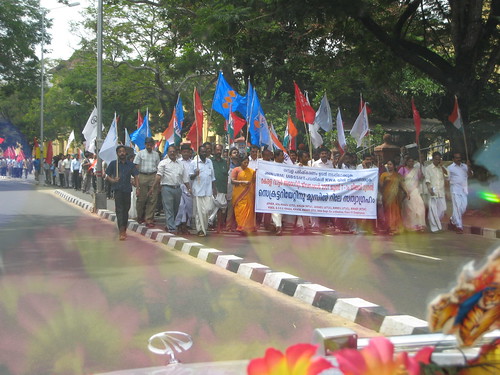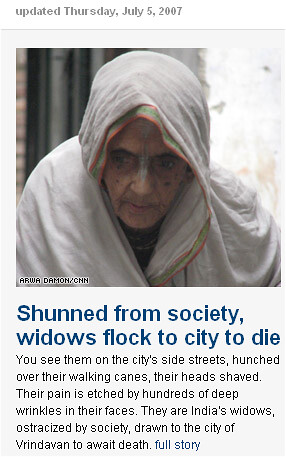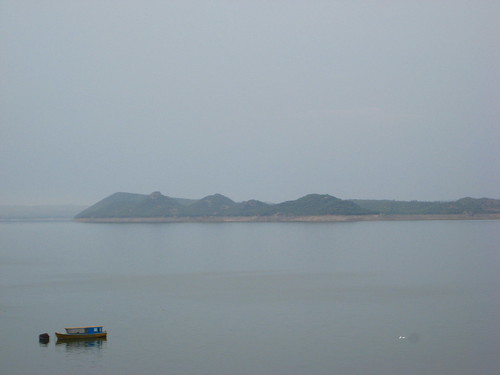 |
(A bunch of people protesting against something,
blocking traffic in Trivandrum) |
A sales girl working long hours in a traditional shop in Kerala gets paid about Rs. 600/month. A consumer who wants to drink Frooti in Kerala is instead offered Maaza because the profit margin on Frooti is less. If you are a shop owner, you have to join this mafia type organization called Kerala Vyapari Vyavsayi Ekopana Samithi (KVVES) and they decide what is to be sold to the consumer and what not to be sold. Everyone including the suppliers and Government are blackmailed and they protest if legal action is taken against their illegal activities. While employees and consumers are exploited, any effort to provide an alternative is threatened with violence.
Upset that their hostage taking of an entire state is about crumble, the members of KVVES have threatened to physically destroy Reliance outlets. At this point you would think that the State Govt. should step in, warn the traders, and advice them that they don’t live in Cuba but in India where citizens have the right to trade wherever they like, provided they follow the law. Instead in Kerala, members of the treasonous Communist Govt. are busy drafting legislation preventing the entry of retail giants.
The Communists have successfully converted Kerala into a protest state for events which they cannot influence like globalization and the imaginary American imperialism. Their brain damaged supporters also walk around attacking everyone, including farmers and the Chief Minister threatens businesses with severe action if they assert their fundamental rights like going to the courts. Recently when it was mandated that all motorcycle riders would have to wear helmets, people protested by wearing plastic pots with holes in it with the attitude that they would rather die in road accident than wear such things.
Sitting in their air conditioned offices and residences in AKG Bhavan, their HQ in Kerala, the Communists have always said that they stand for the poor, but in reality the Communists are the biggest obstacle for the poor. Supermarkets like Reliance and Spencers can offer goods at a lower price than shops owned by the trader mafia which can benefit the low wage earner. It has been seen that supermarkets like Wal-Mart have dwarfed anti-poverty programs and the biggest beneficiaries are the poor and so the opposition to giant retailers exposes yet more hypocrisy from the Communists.
Poor people are walking that extra mile (literally) to buy groceries from Reliance Fresh because fresh vegetables are fruits are 10-15% cheaper there than the street vendor. Private companies are investing in techniques to boost farm practices and irrigation systems which would raise farm income by 30 percent. Farmers in Ratnagiri have obtained 90 percent of the original cost compared to the 70 percent they would have obtained by going to Govt. regulated mandis. Then facts should never obstruct an opportunity to keep Kerala as the economic waste land that it is now.
A new Malayalam movie from Lal Jose exposes how the party of poor has moved away from ordinary people, its voter base, to be a party controlled by a corrupt leadership devoid of any ideology or social commitment and how the dogma of Communism has been kept alive by the leaders for their own survival. The lies peddled by the Communist leaders are swallowed by the “enlightened public” without any questioning.
In fact this opposition to the entry of retail giants very clearly shows where the loyalty of the Communist party lies. Rather than support something which will bring low prices for the poor, they would stand with the labor aristocracy, the bourgeoisie. This shift in stance has the logical explanation that the poor are, well poor, while the bourgeoisie traders have money.
What else do you expect from a party which has become filthy rich playing poverty politics?



